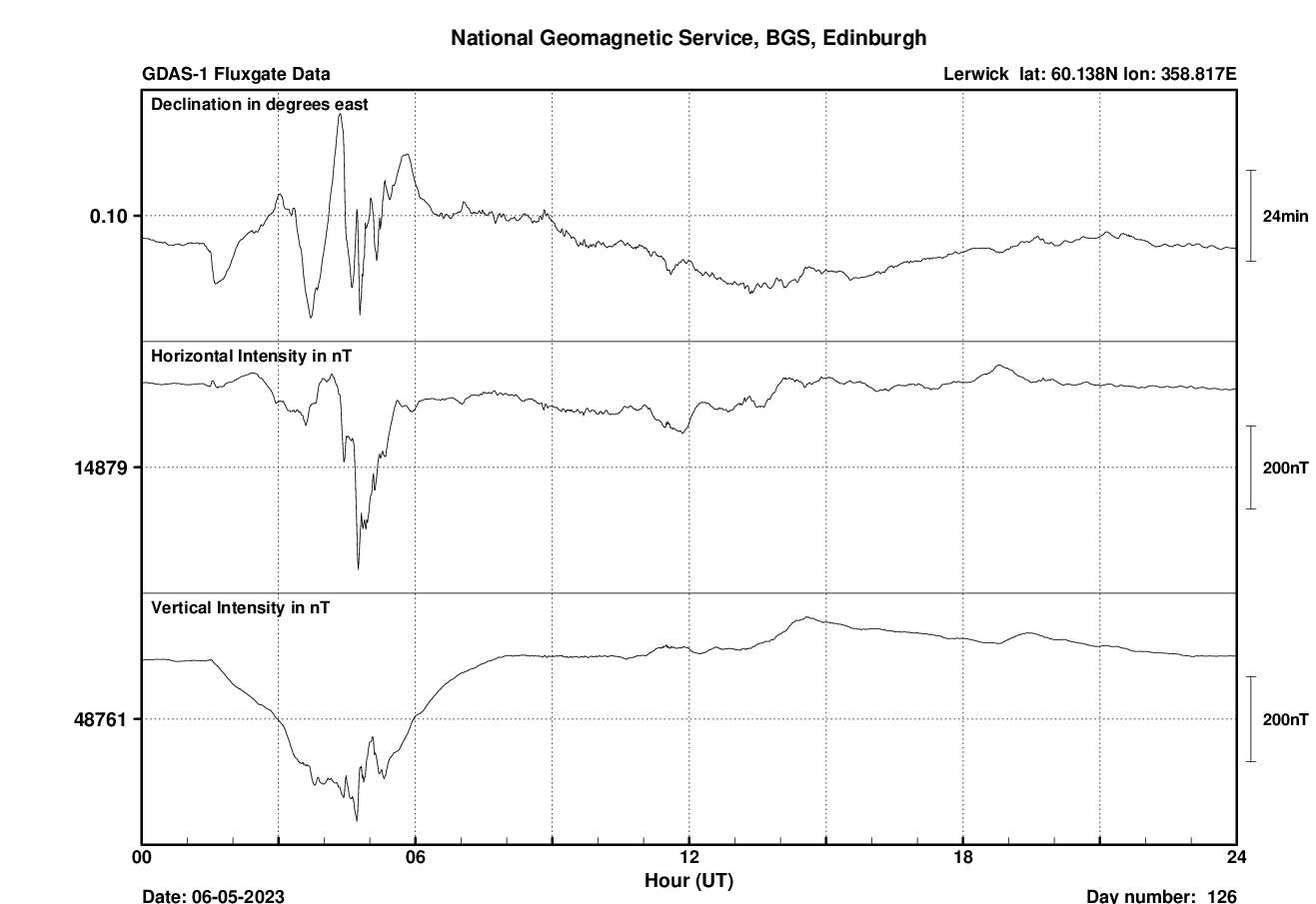Space Weather Alert - 9th May 2023
What Has Happened?
A long-duration M-class flare was detected late on 7th, early on 8th May with an associated Coronal mass ejection (CME), which is anticipated to arrive during the latter half of the 10th May, making STORM periods once again possible.
The CME on the 4th May arrived earlier than predicted, at 01:29 UT on 6th May as recorded by BGS magnetometers. Activity levels reached STORM conditions in the early hours of the 6th May. Those effects have now subsided.
Assuming clear dark skies, there is an increased chance of seeing the aurora on 10th-12th May. Those in Scotland, northern England and Northern Ireland have the best chance if the weather is favourable.
Sign-up to receive Geomagnetic Disturbance Alert emails.
Follow us on Twitter:
Follow @BGSauroraAlert for more occasional aurora alerts.
Follow @BGSspaceWeather for daily space weather forecasts.
Glossary
- BGS
- The British Geological Survey is a geoscience research centre that is part of UK Research and Innovation (UKRI) and affiliated to the Natural Environment Research Council (NERC).
- CME or Coronal Mass Ejection
- The eruption of a portion of the outer atmosphere of the Sun into space, caused by rapid changes in its magnetic field. Often occurs along with a solar flare.
- Solar Flare
- Energy released by the explosive reorganisation of magnetic fields within the Sun's atmosphere.
- Magnetogram
- The variation, minute by minute, of the strength and direction of the Earth’s magnetic field. Measured in units of nano-Tesla (for the strength of the field) or in degrees (direction of the field).


